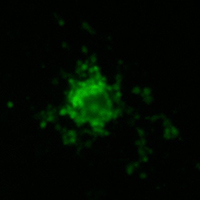 Smart Citations
Smart CitationsSee how this article has been cited at scite.ai
scite shows how a scientific paper has been cited by providing the context of the citation, a classification describing whether it supports, mentions, or contrasts the cited claim, and a label indicating in which section the citation was made.
Histochemistry for nanomedicine: Novelty in tradition
During the last two centuries, histochemistry has provided significant advancements in many fields of life sciences. After a period of neglect due to the great development of biomolecular techniques, the histochemical approach has been reappraised and is now widely applied in the field of nanomedicine. In fact, the novel nanoconstructs intended for biomedical purposes must be visualized to test their interaction with tissue and cell components. To this aim, several long-established staining methods have been re-discovered and re-interpreted in an unconventional way for unequivocal identification of nanoparticulates at both light and transmission electron microscopy.
How to Cite

This work is licensed under a Creative Commons Attribution-NonCommercial 4.0 International License.
PAGEPress has chosen to apply the Creative Commons Attribution NonCommercial 4.0 International License (CC BY-NC 4.0) to all manuscripts to be published.









